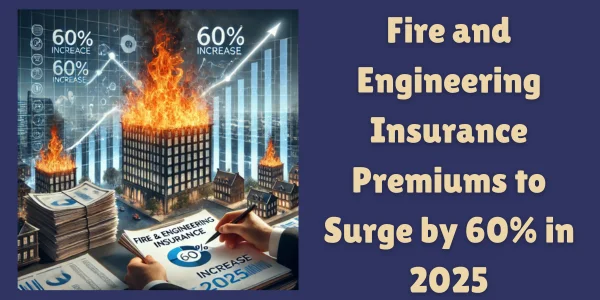In 2025, Indian businesses are poised to encounter substantial increases in premiums for fire and engineering insurance policies. This anticipated rise, potentially up to 60%, is primarily attributed to a surge in catastrophic events and escalating loss ratios that have pressured reinsurers to adjust their rates.
Factors Driving Premium Hikes
The year 2024 witnessed multiple natural disasters across India, notably in regions like Gujarat and Nagpur, leading to significant financial setbacks for insurers and reinsurers. These events have disrupted the ‘free pricing’ mechanism in the insurance sector, compelling a reevaluation of premium rates.
In April 2024, the Insurance Regulatory and Development Authority of India (IRDAI) de-notified certain policy wordings and deductibles that were previously standardized by the Tariff Advisory Committee. This regulatory change ushered in an era of free pricing from May 2024, granting insurers the autonomy to set their own rates, independent of the benchmarks established by the Insurance Information Bureau of India (IIB).

However, this newfound flexibility led to intensified competition among insurers, resulting in premium reductions of up to 50% in various segments. While initially beneficial for policyholders, these lower premiums have strained the financial stability of insurers and reinsurers, especially in the wake of increased claims from natural calamities.
Implications for Policyholders
The impending premium hikes are expected to disproportionately affect policyholders based on their renewal timelines:
- May to December 2024 Renewals: Businesses that secured or renewed policies during this period, under the free pricing regime, may face premium increases of up to 60%, contingent on the nature of their operations and associated risks.
- January 2025 Renewals: For those renewing in early 2025, the anticipated premium escalation is more moderate, ranging between 5% to 10%. This is because policies during this period were not subject to free pricing, thereby mitigating the extent of the increase.
Industry experts highlight that large corporations in India currently pay premiums ranging from ₹5 crore to ₹250 crore for fire insurance coverage, depending on the scale and complexity of their operations. The projected premium hikes could significantly elevate operational costs, prompting businesses to reassess their risk management and insurance strategies.
Industry Response and Future Outlook
The insurance sector is at a critical juncture, balancing competitive pricing with financial sustainability. The recent trend of aggressive discounting, while advantageous to consumers in the short term, has led to adverse loss ratios for insurers and reinsurers. This scenario has necessitated a market correction to ensure the long-term viability of insurance providers.
Hanmant Dudle, Head of Large Account Practice (Property & Construction) at Howden Insurance Brokers, noted, “We have been seeing quite a fall and very heavy discounting in fire and engineering lines as far as premium goes. Now, this leads to a situation where the overall book for an insurer, and importantly the reinsurer, gets into an adverse area.”
Looking ahead, the industry anticipates a stabilization of premium rates, aligning them more closely with the underlying risks. This adjustment is expected to enhance the financial health of insurers and reinsurers, enabling them to effectively underwrite and manage policies in the face of escalating natural disasters.
Recommendations for Businesses
In light of the forthcoming premium increases, businesses are advised to:
- Conduct Comprehensive Risk Assessments: Evaluate potential vulnerabilities to fire and engineering risks to determine appropriate coverage levels.
- Explore Risk Mitigation Strategies: Implement safety measures and compliance protocols to reduce risk exposure, which may, in turn, influence premium costs favorably.
- Engage with Insurance Advisors: Consult with brokers or insurance advisors to navigate the evolving market landscape and secure optimal coverage terms.
By proactively addressing these considerations, businesses can better manage the financial implications of rising insurance premiums and maintain robust protection against unforeseen events.